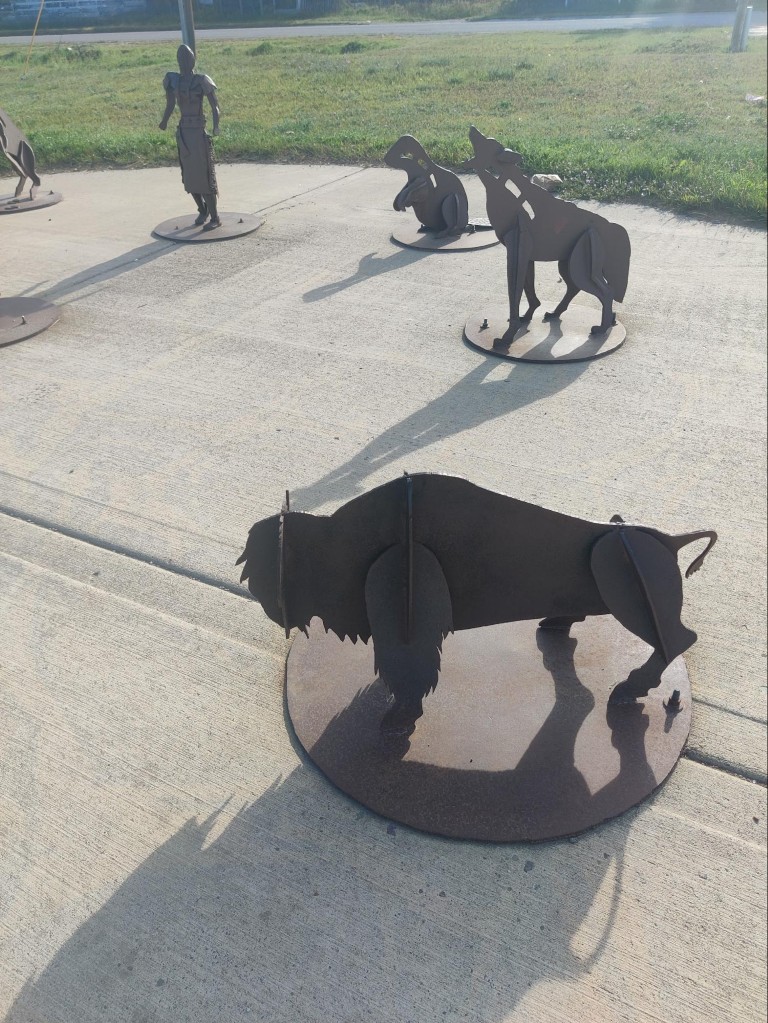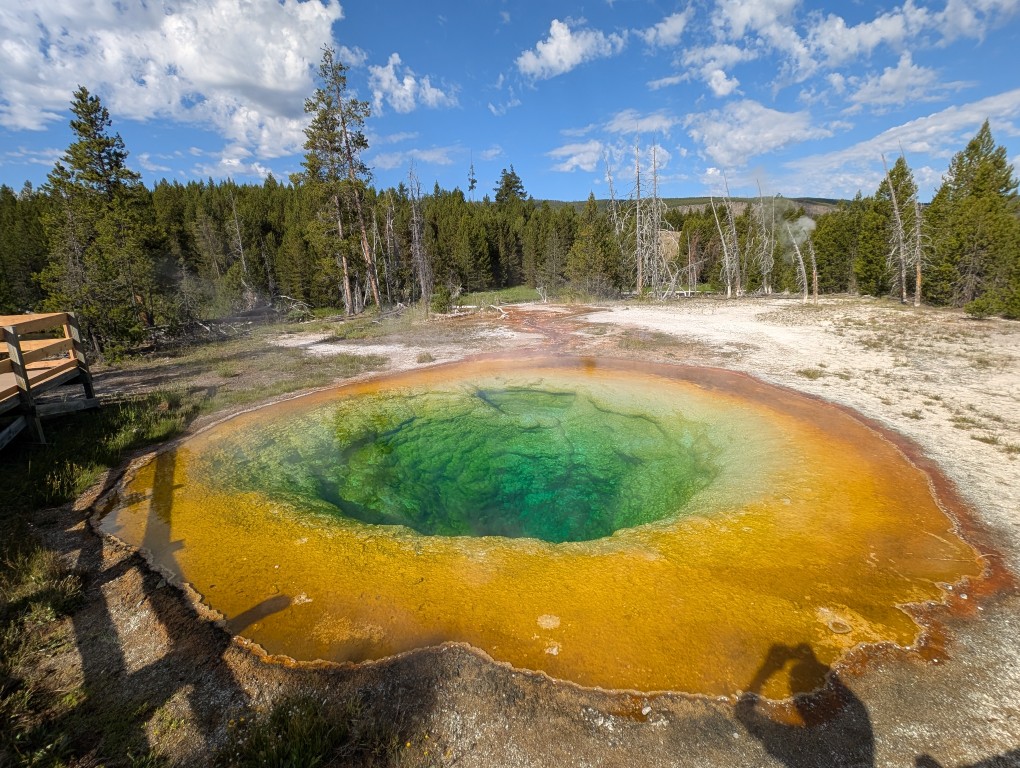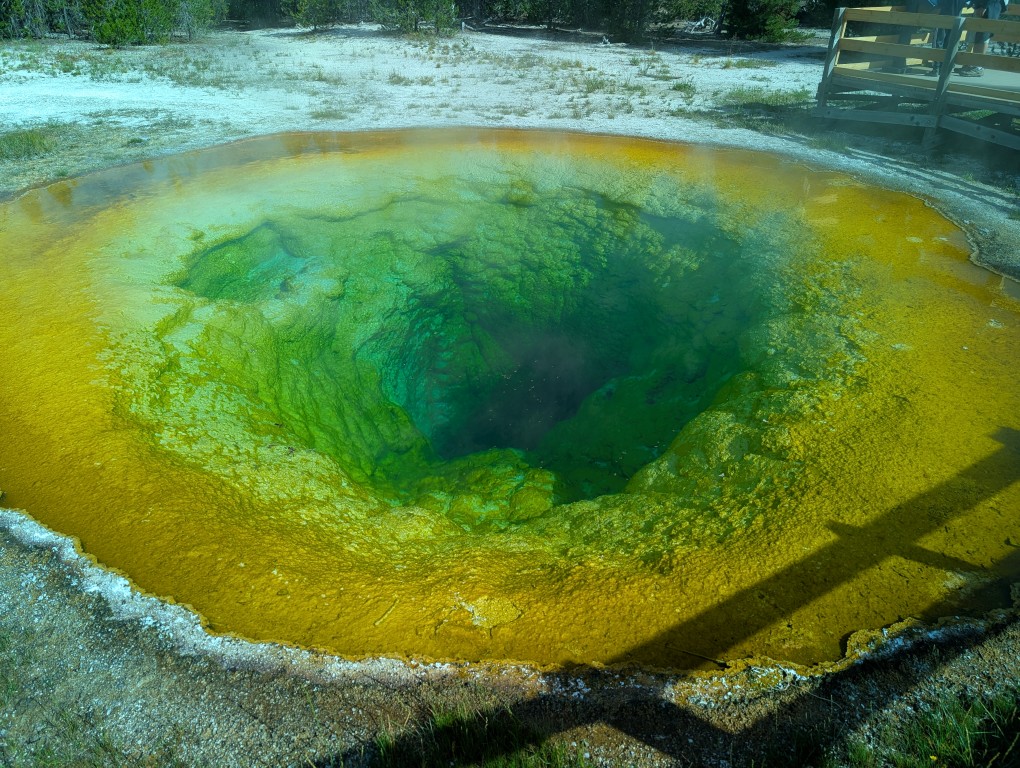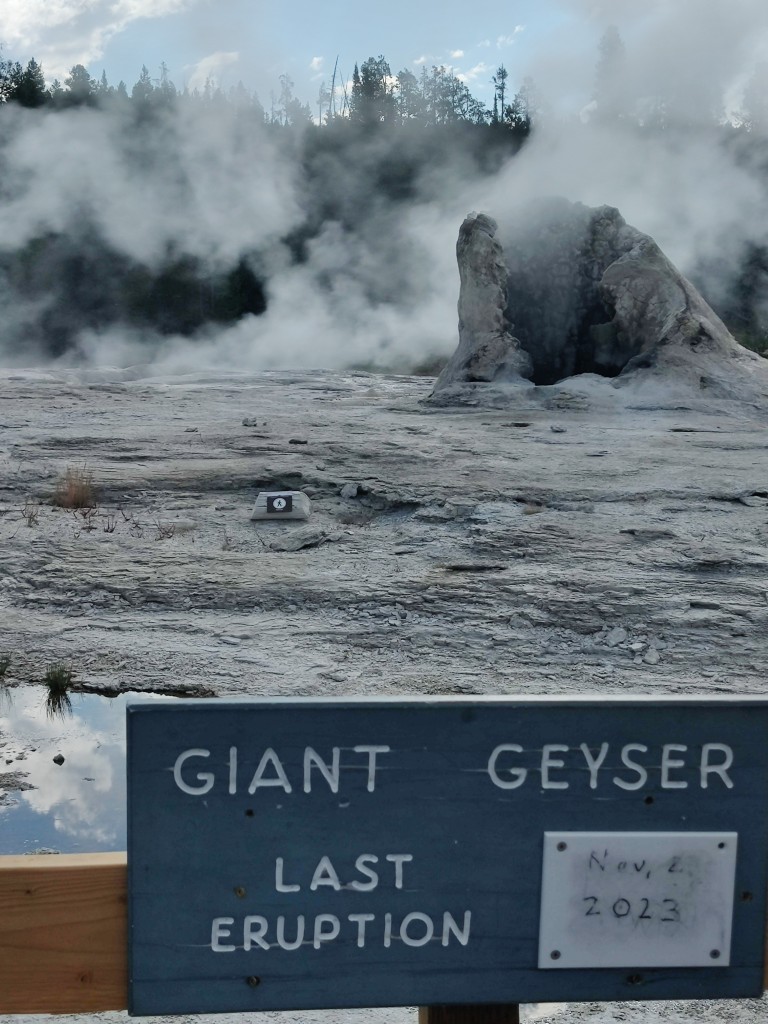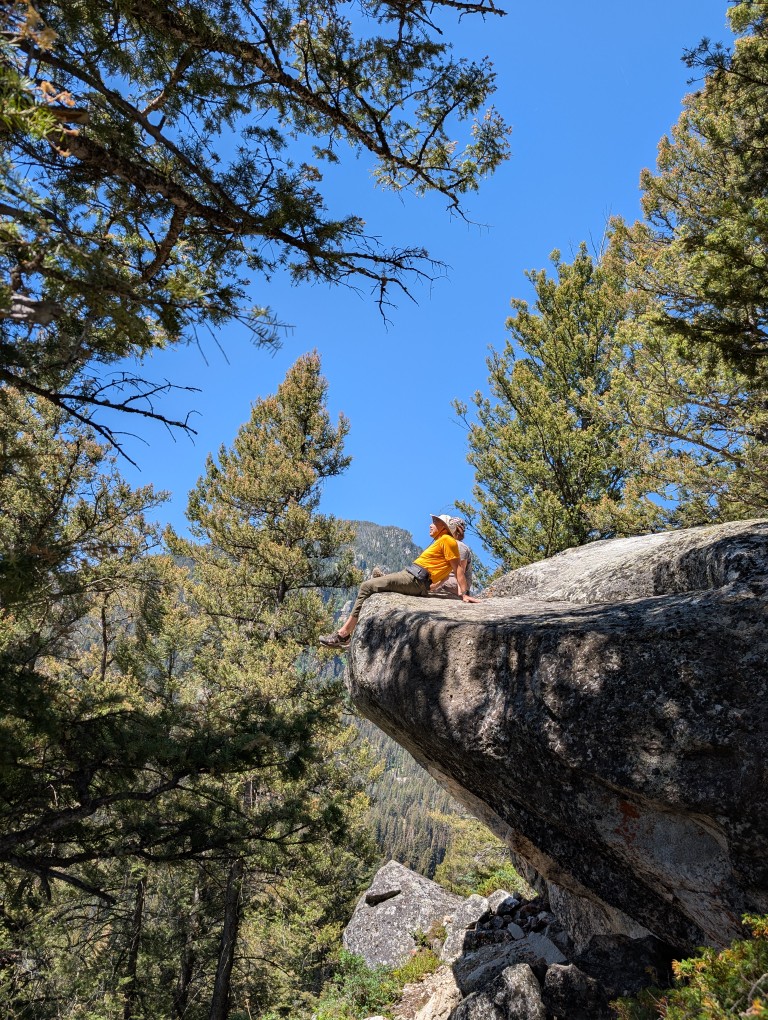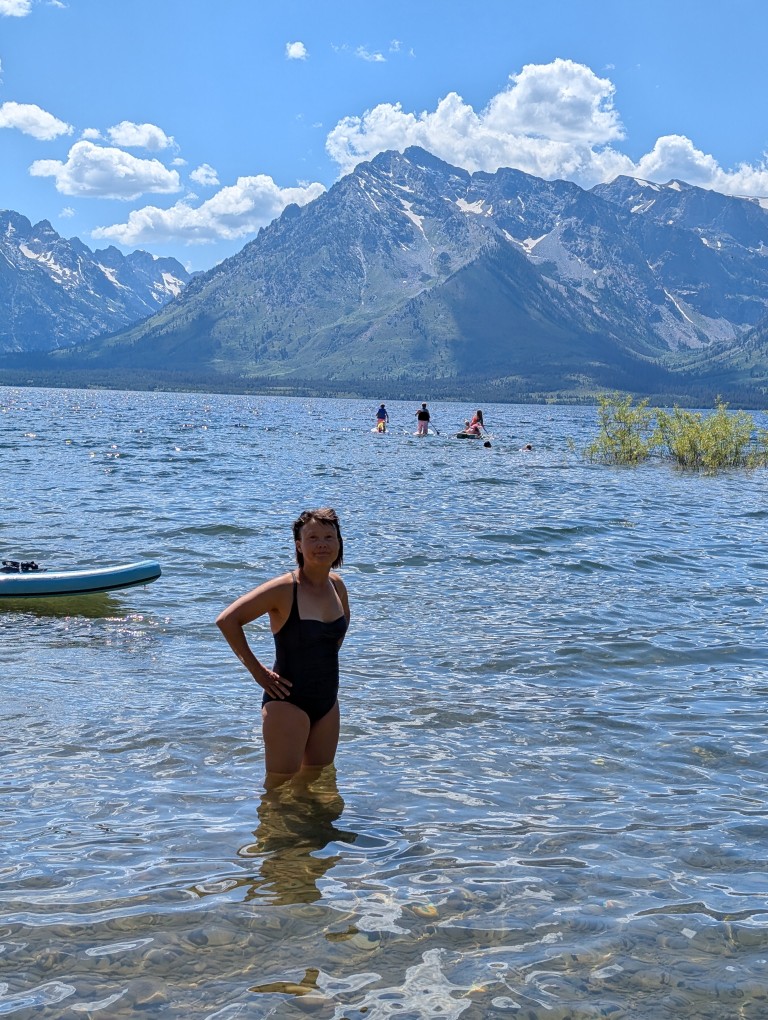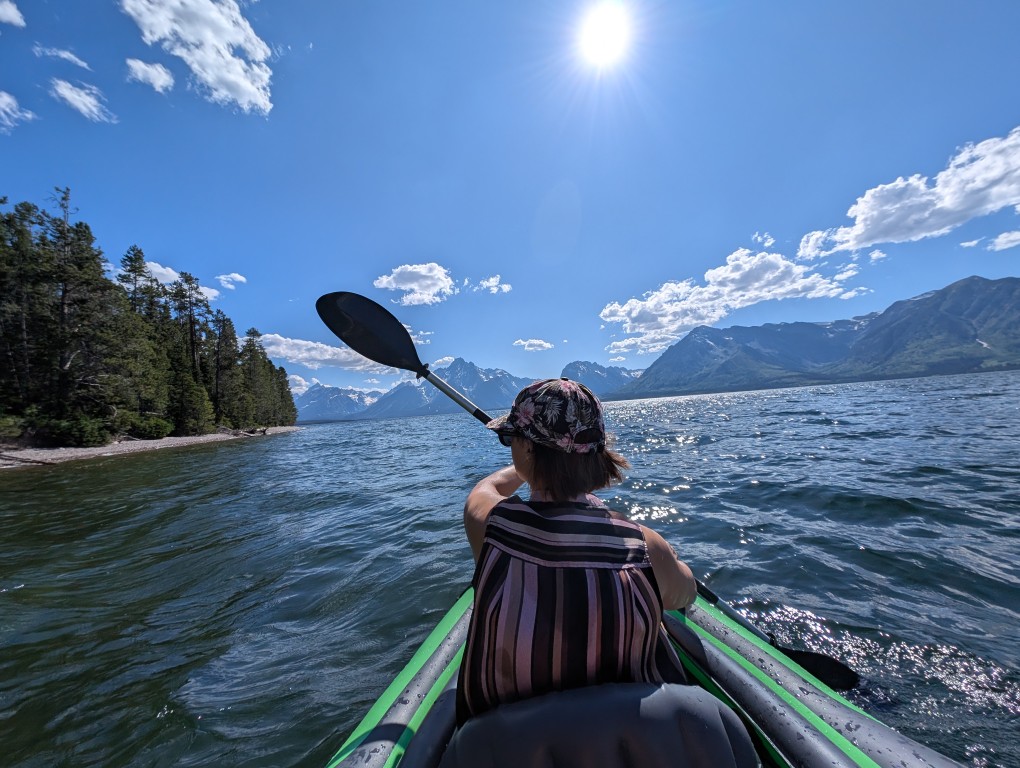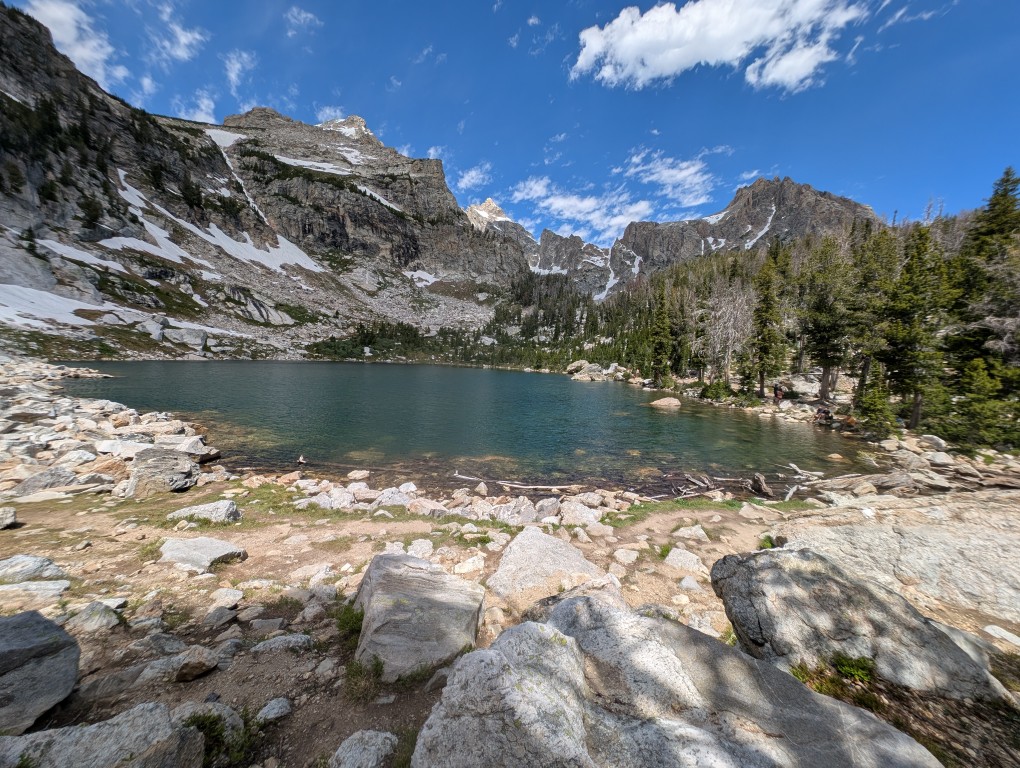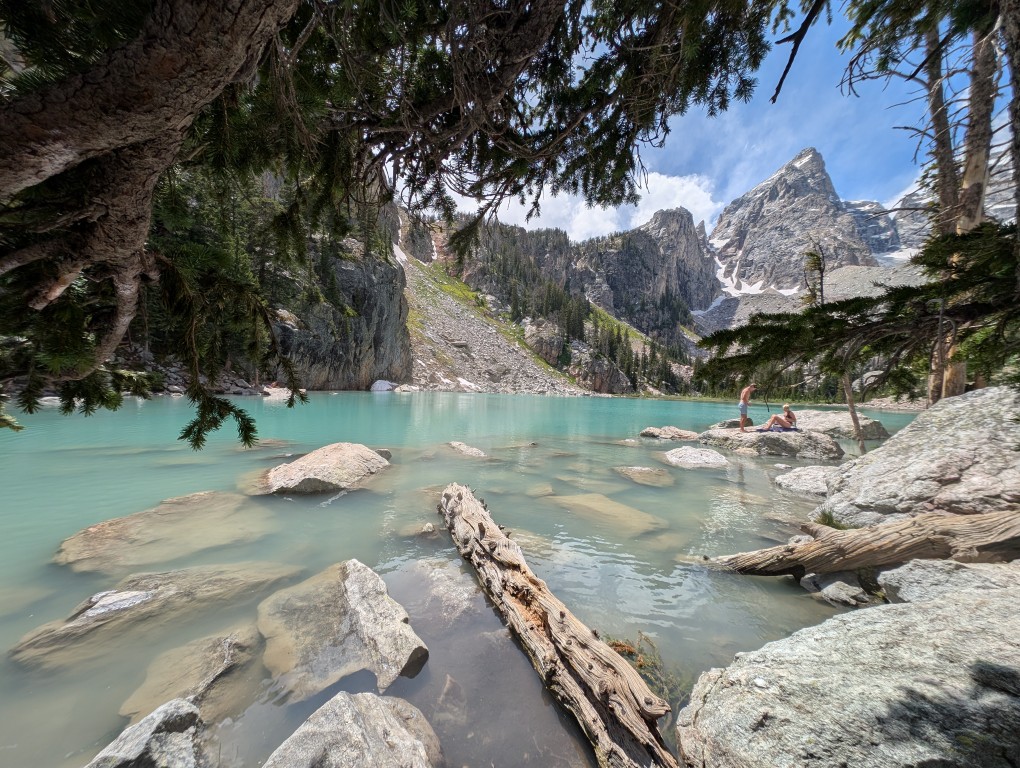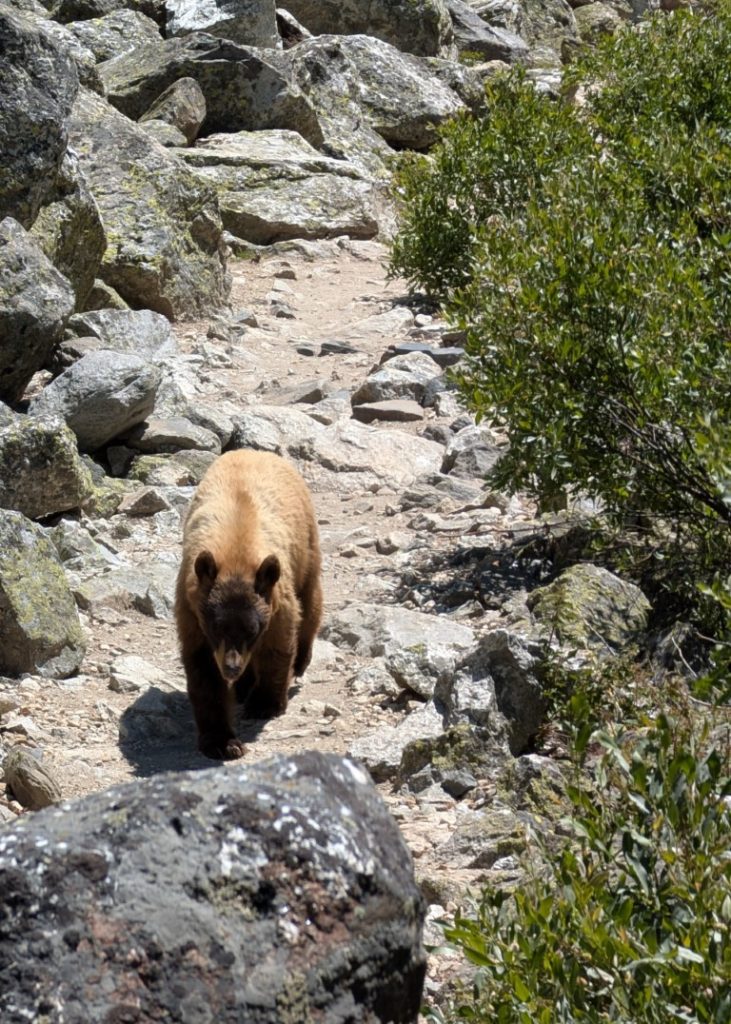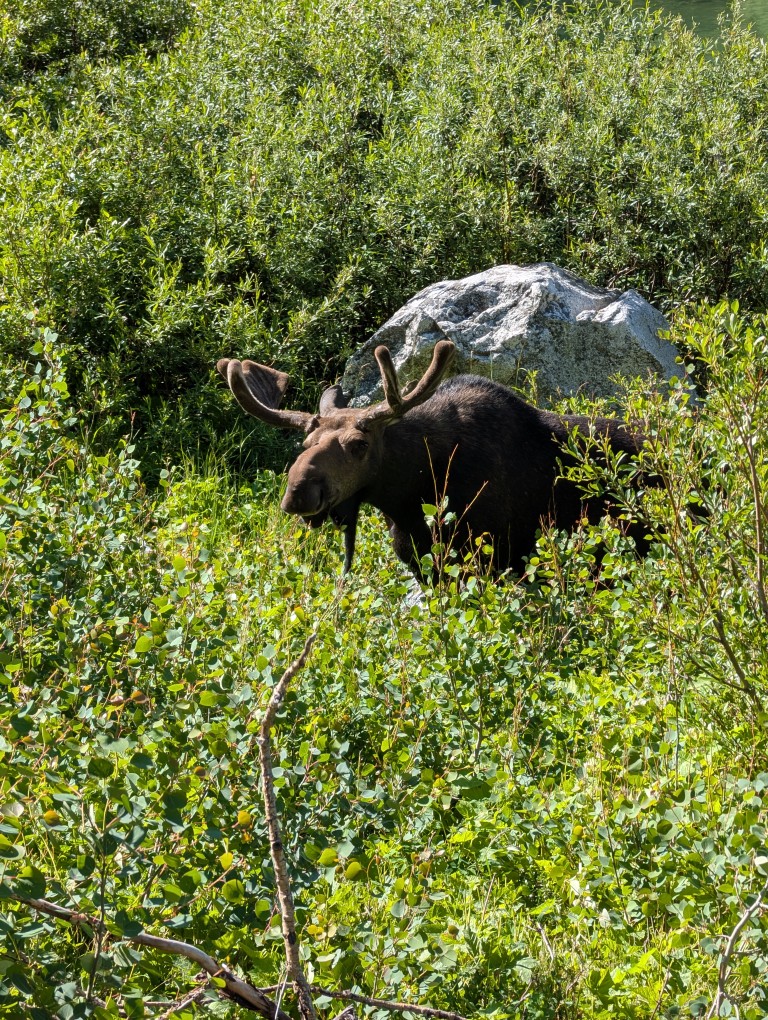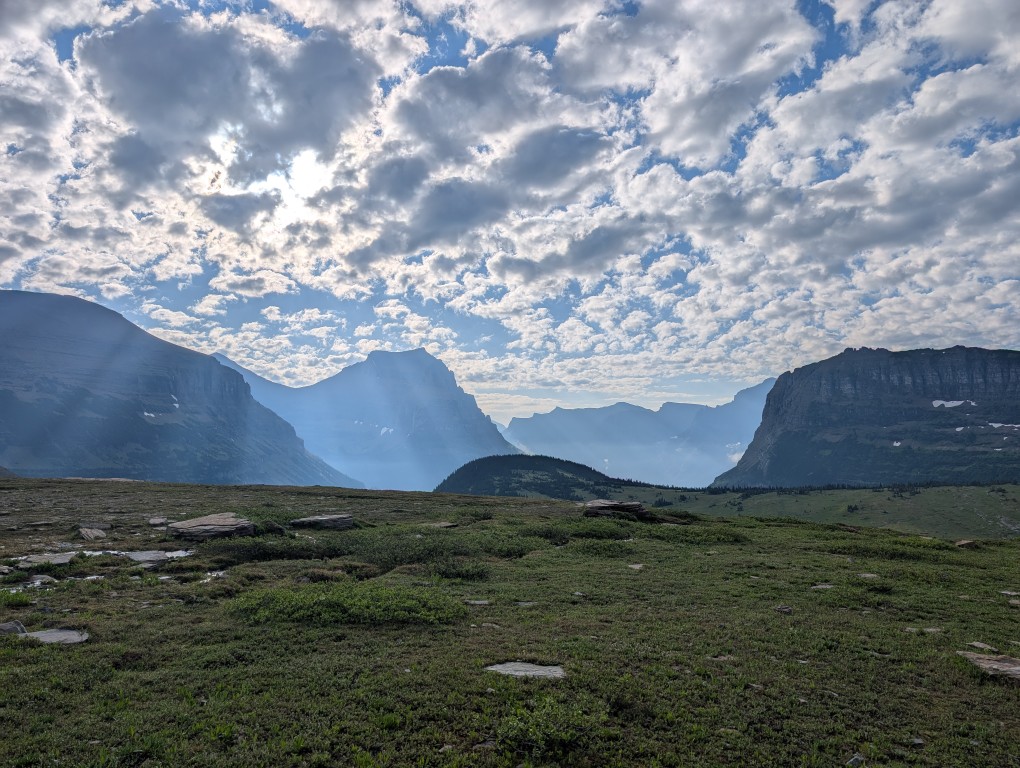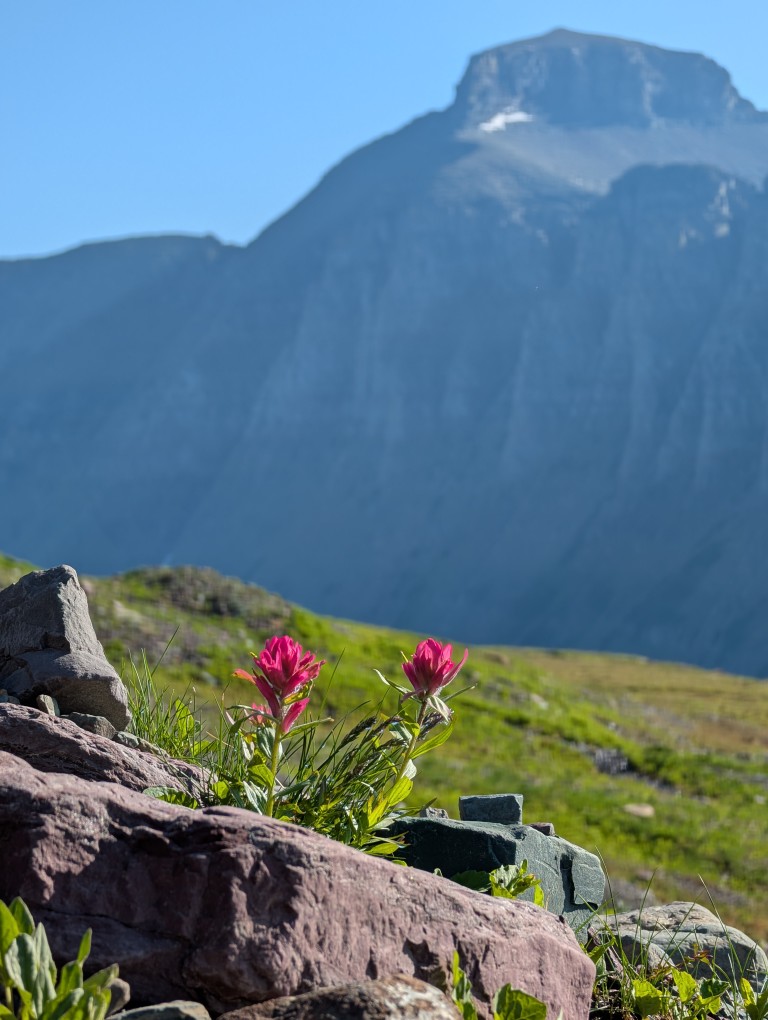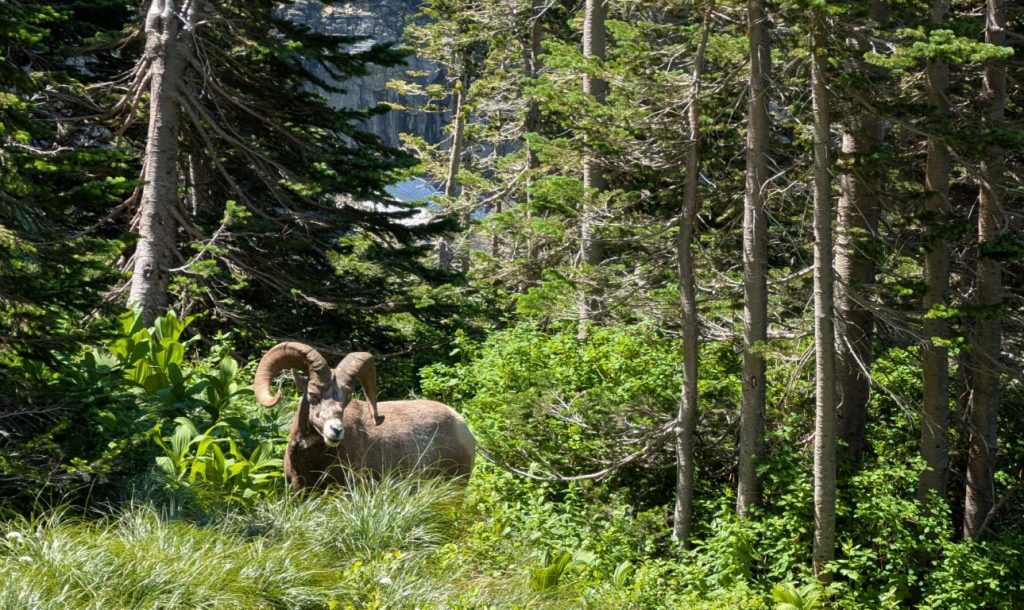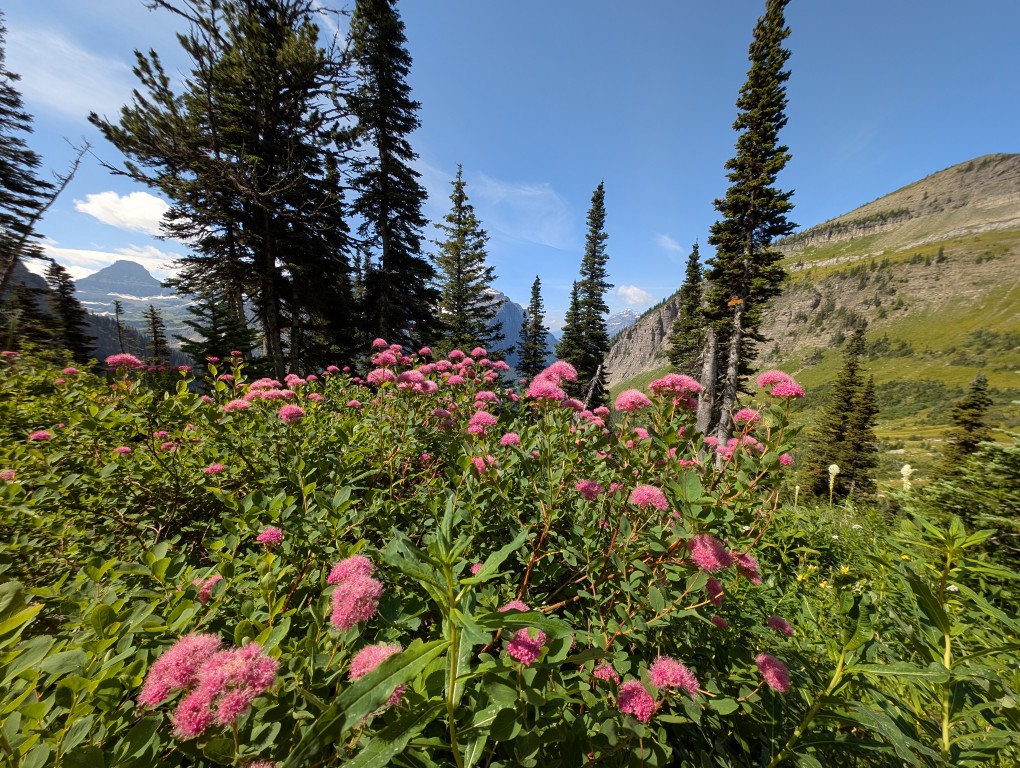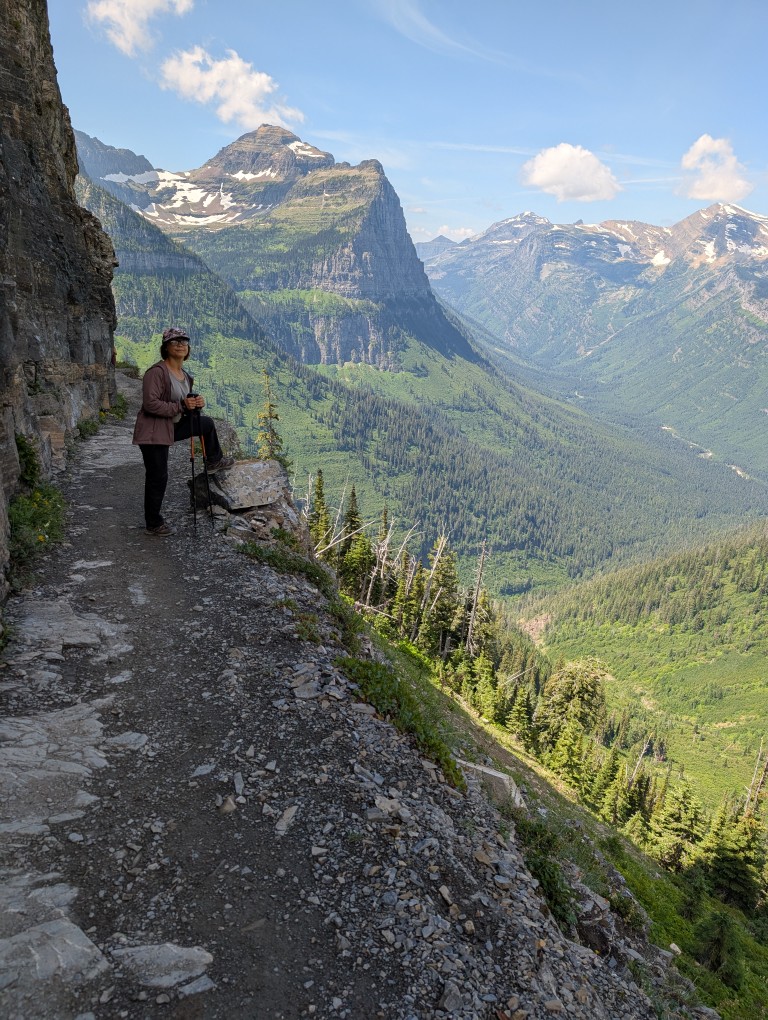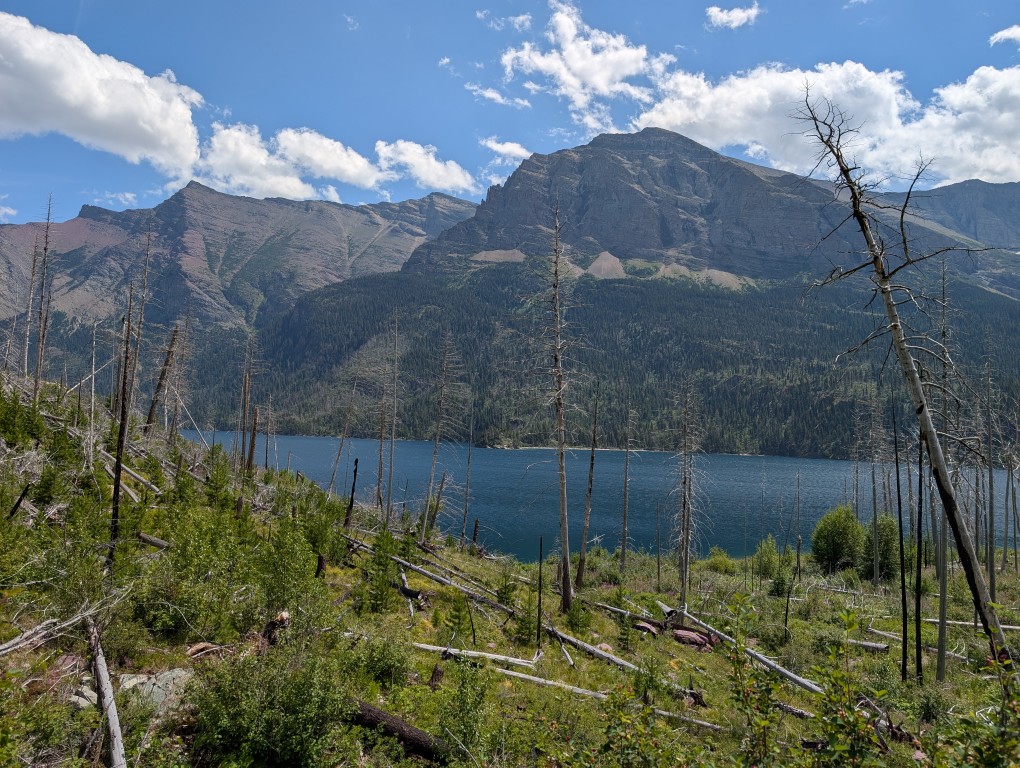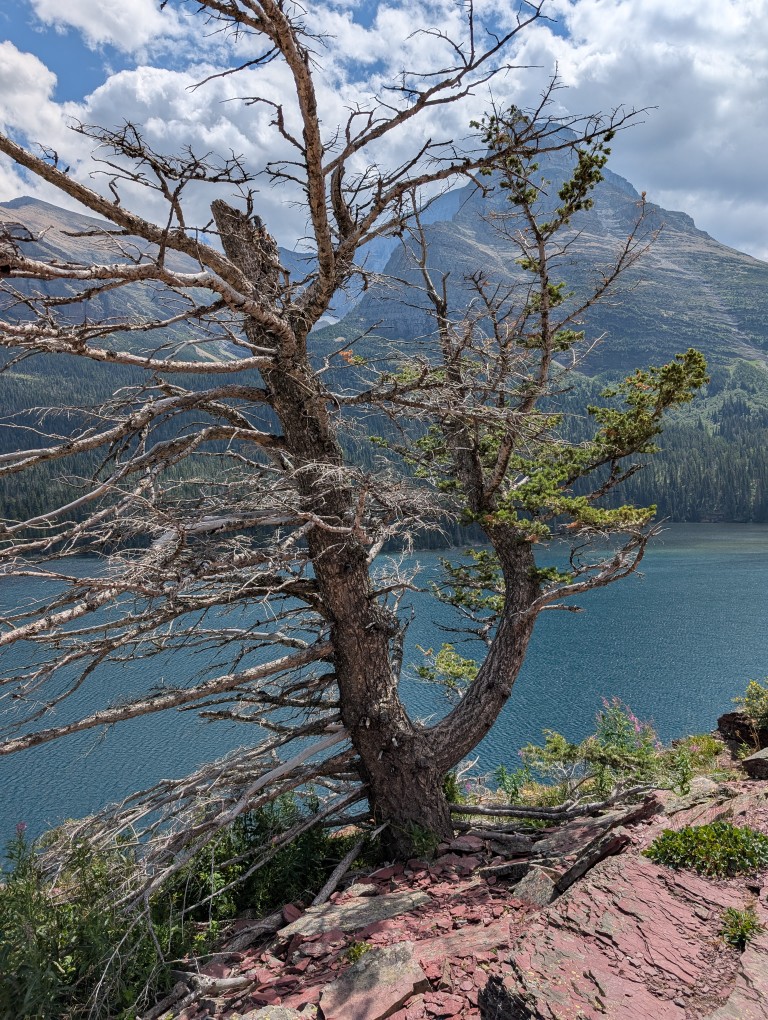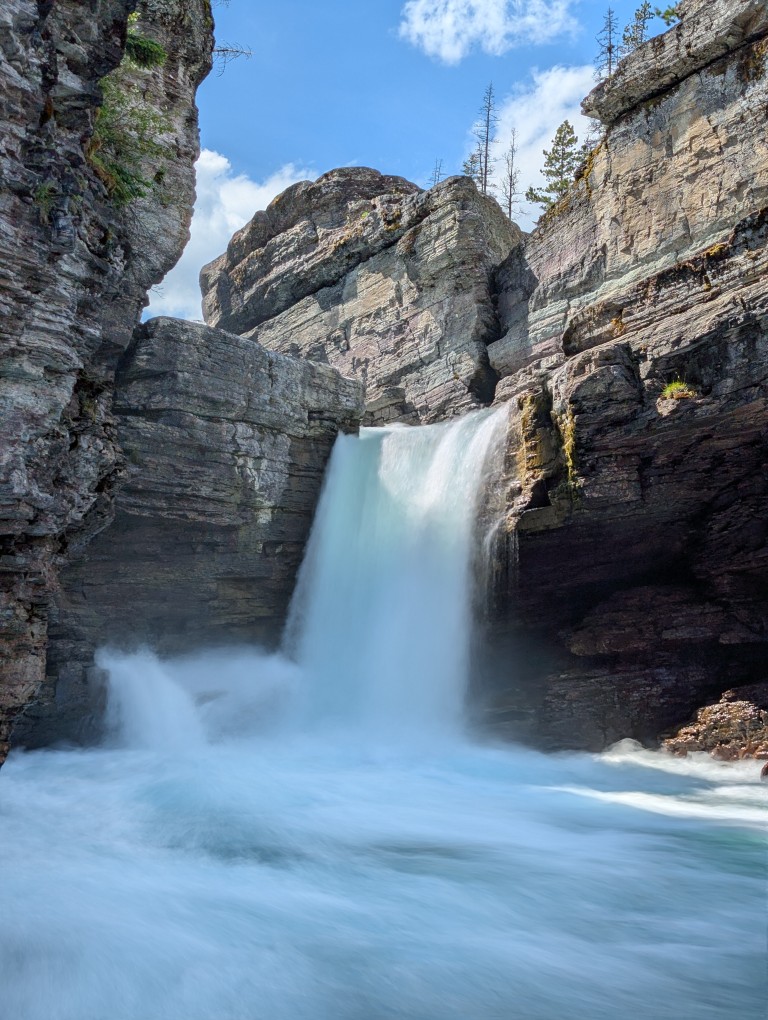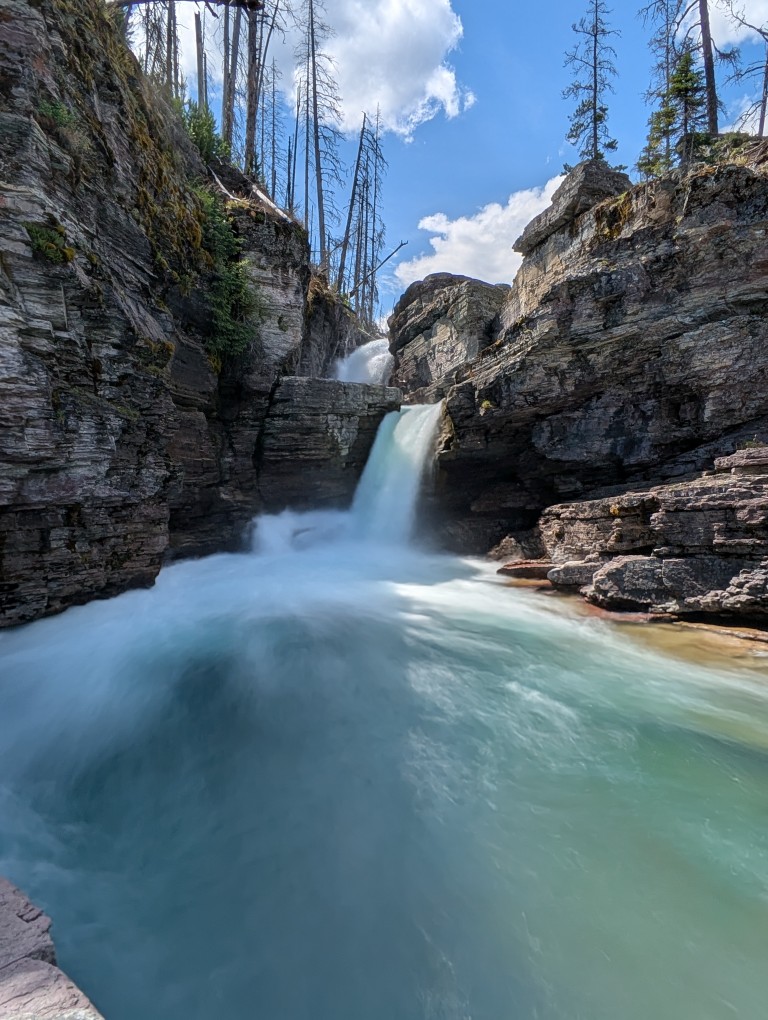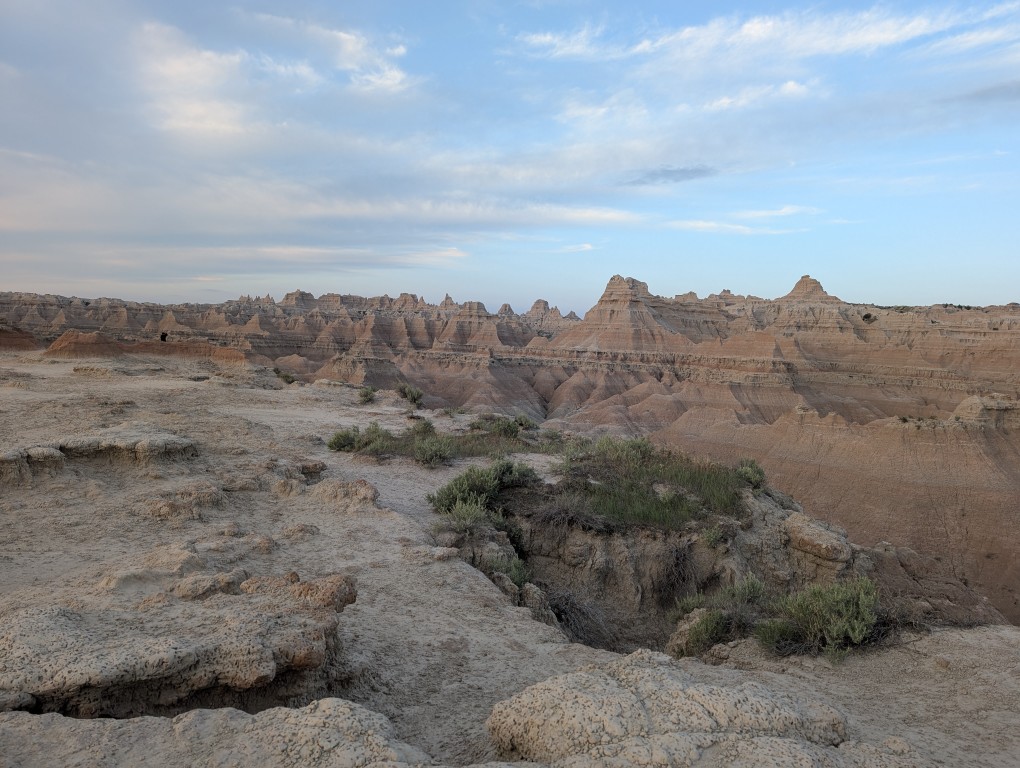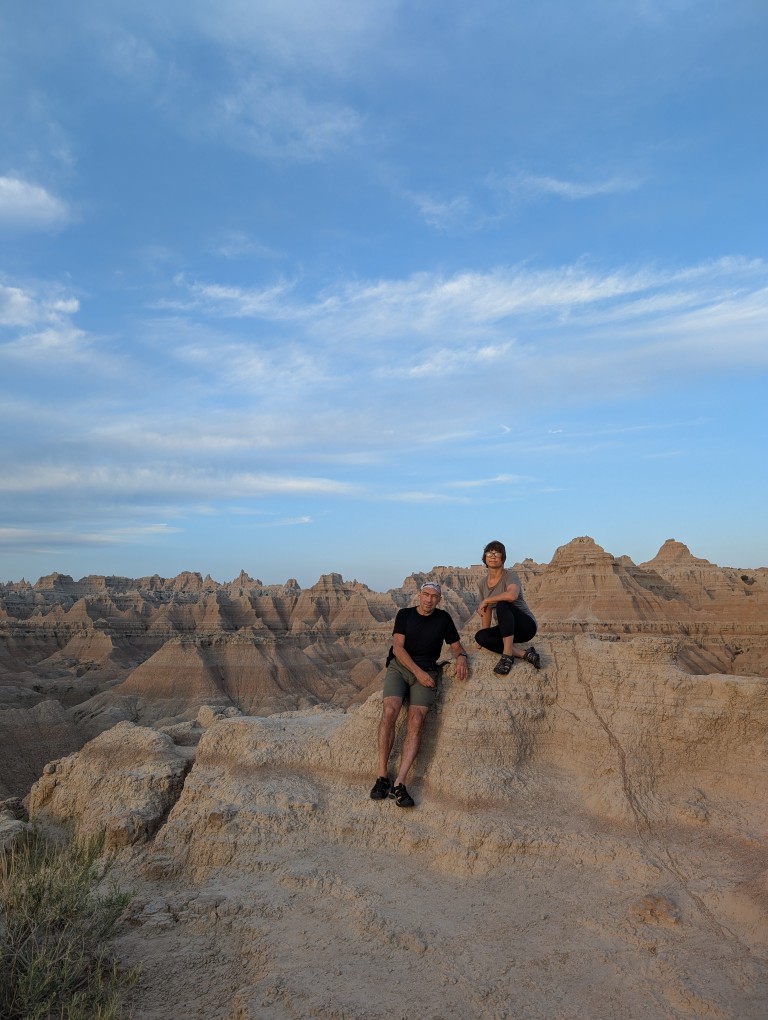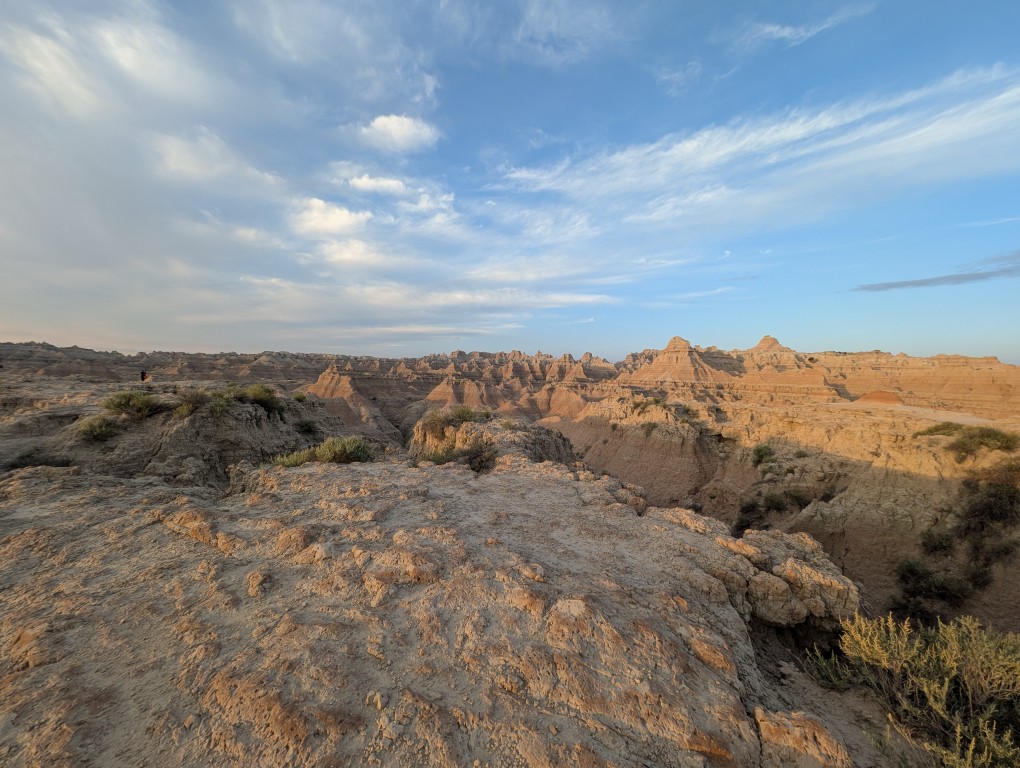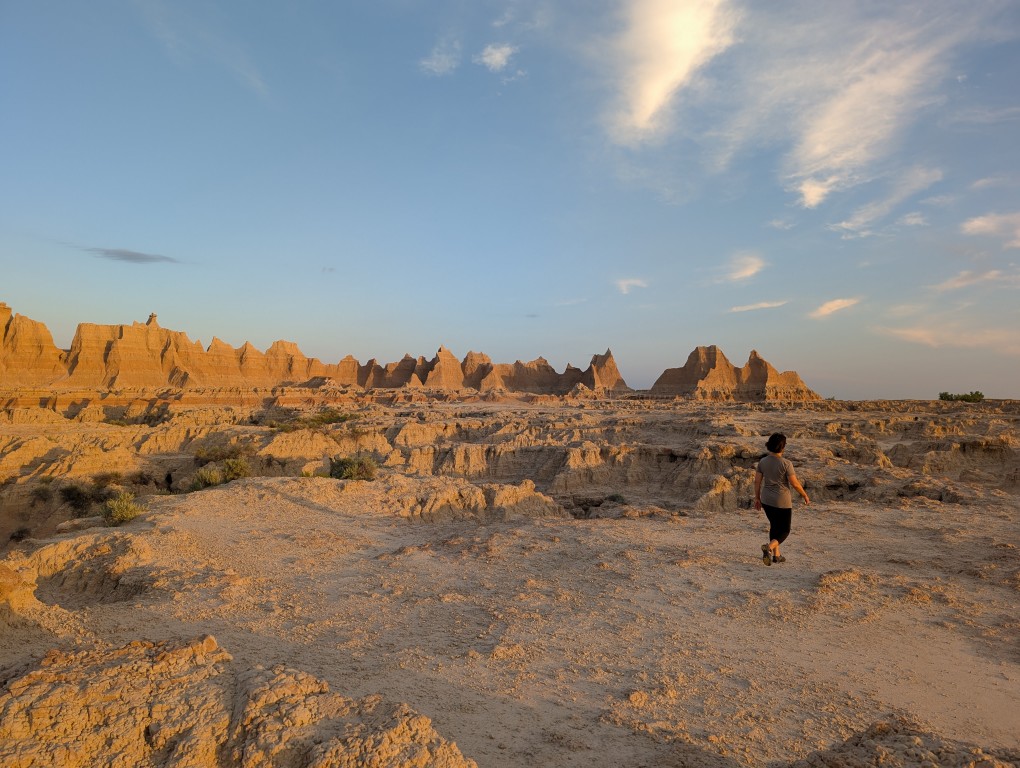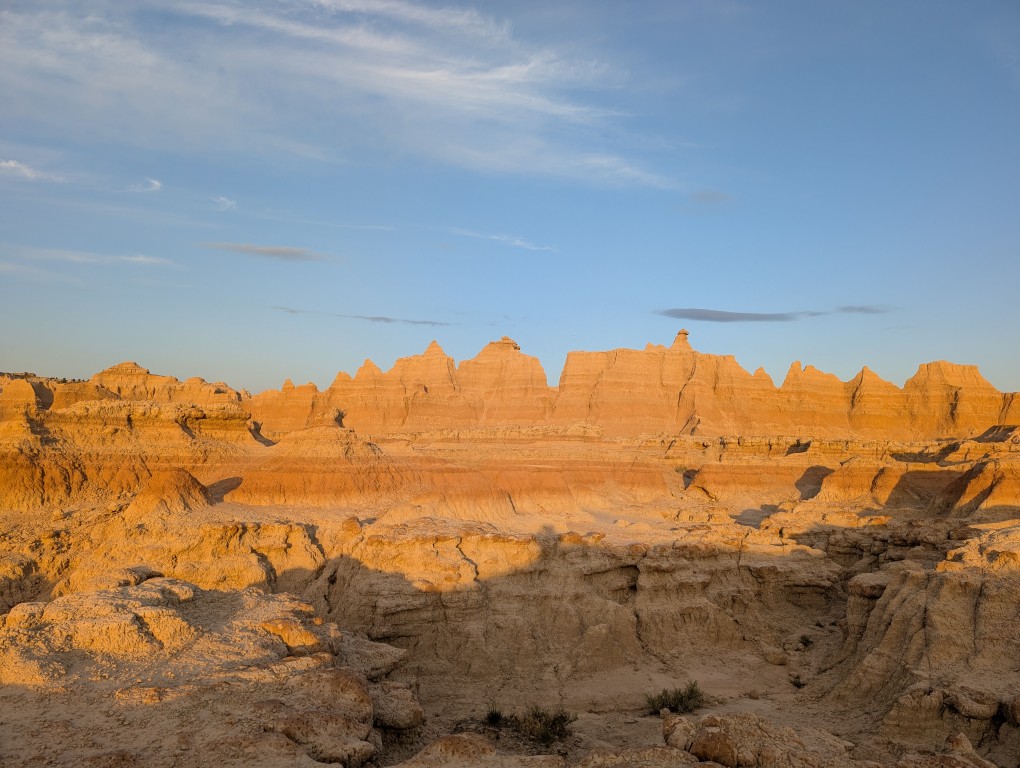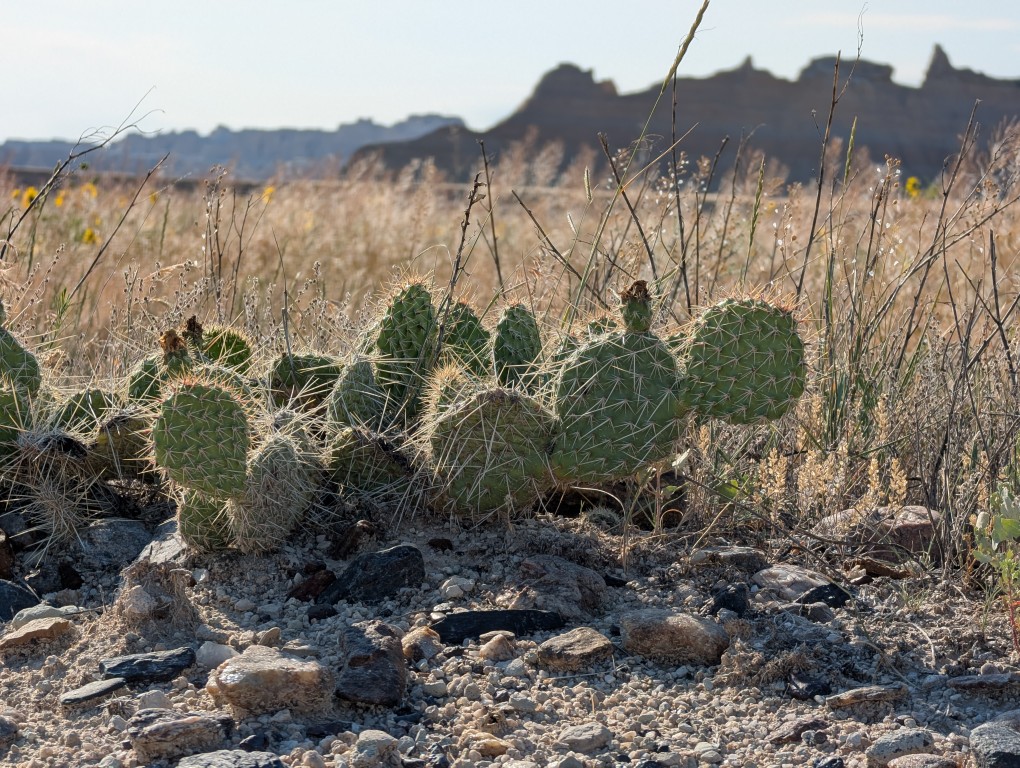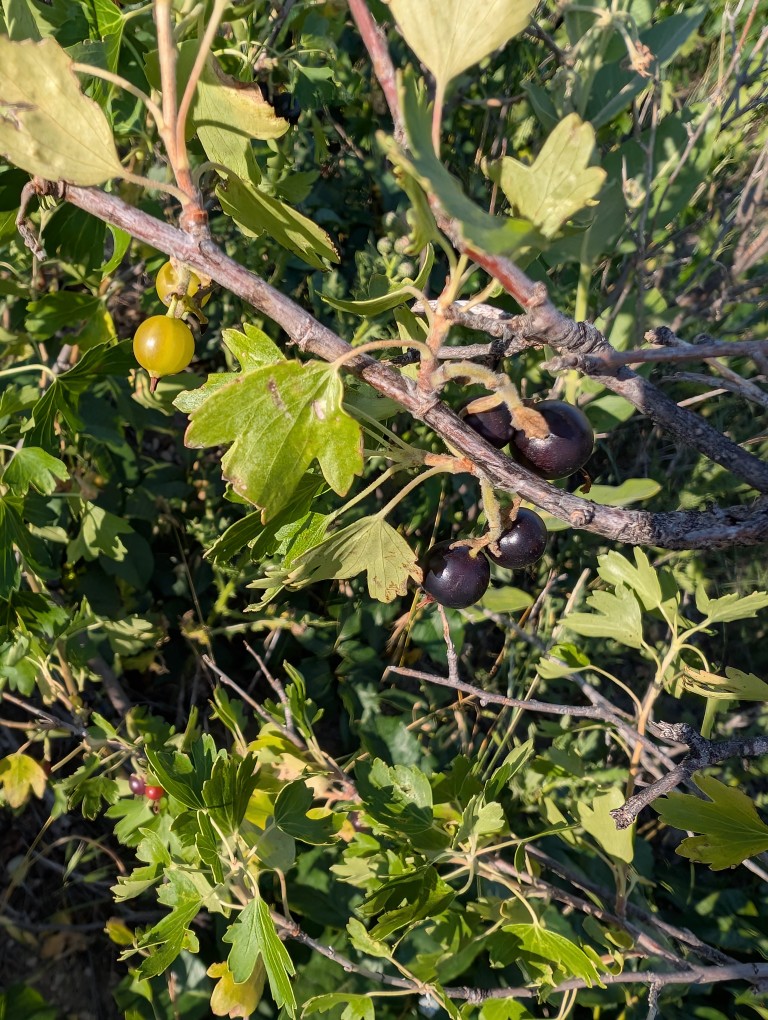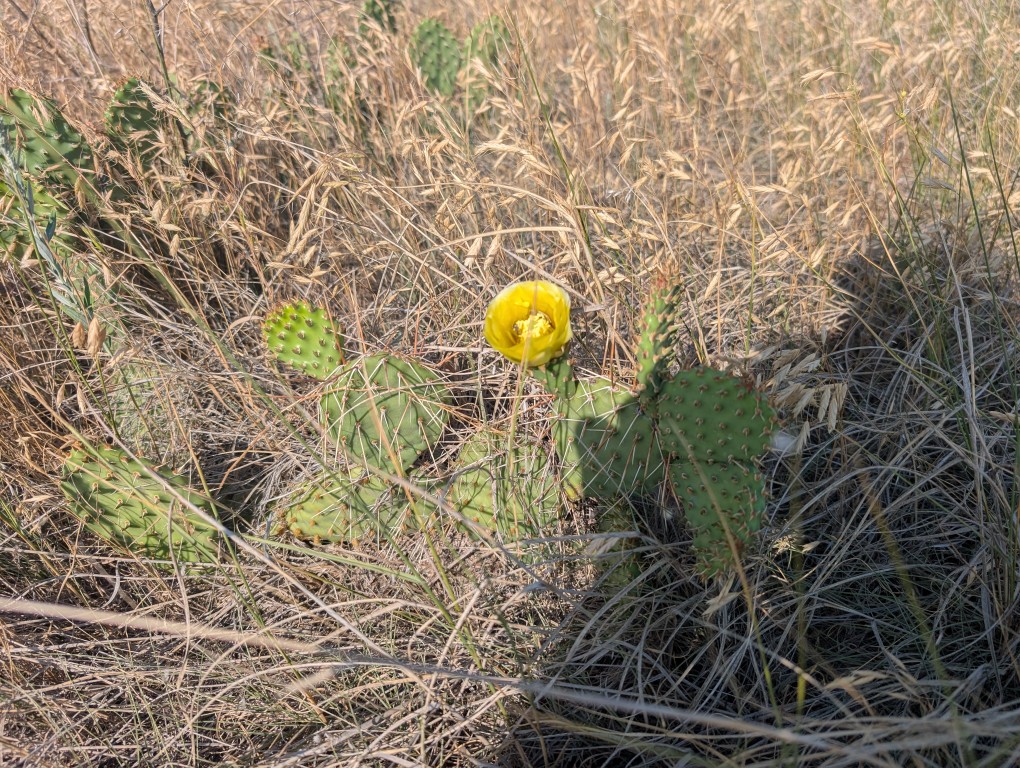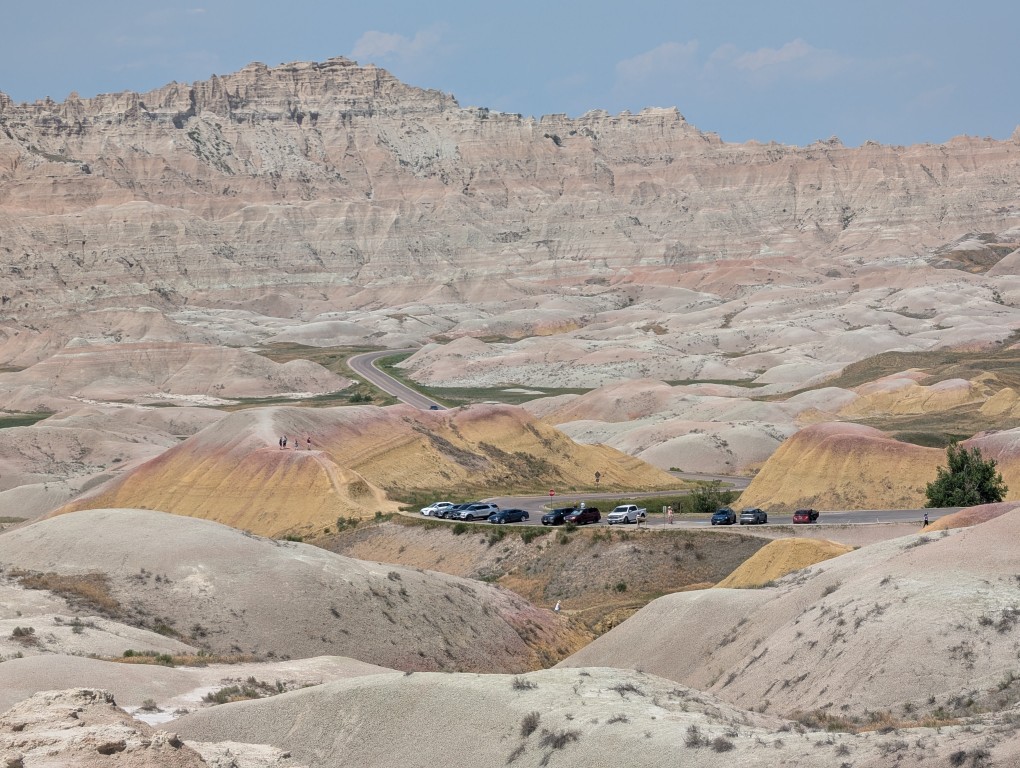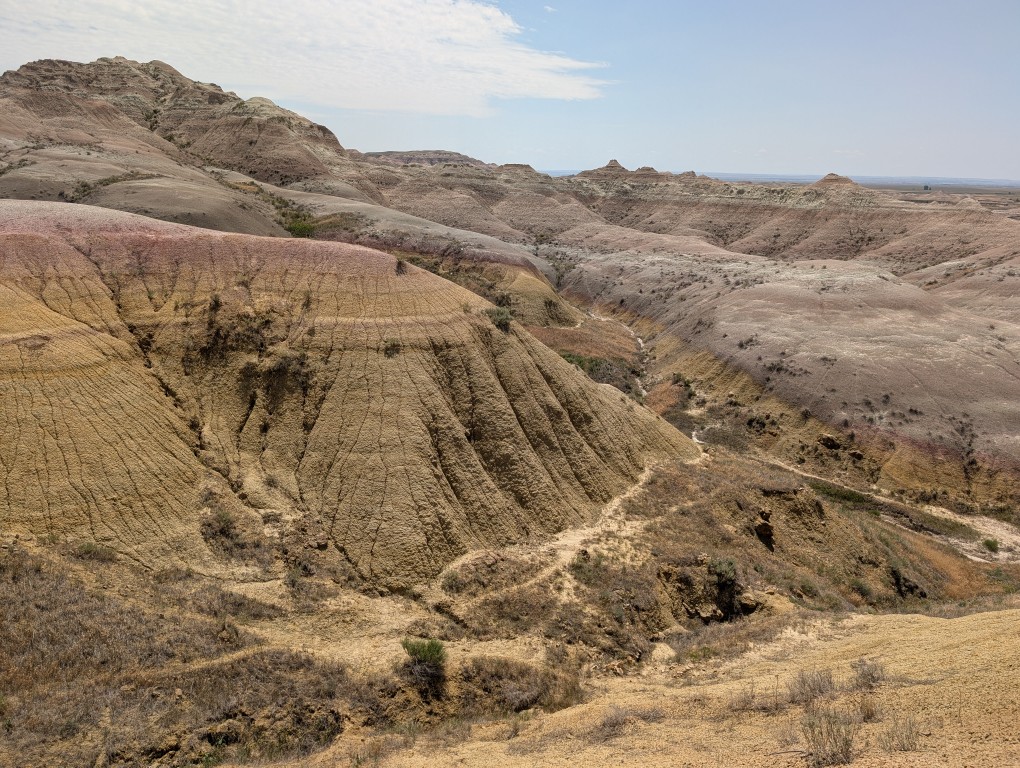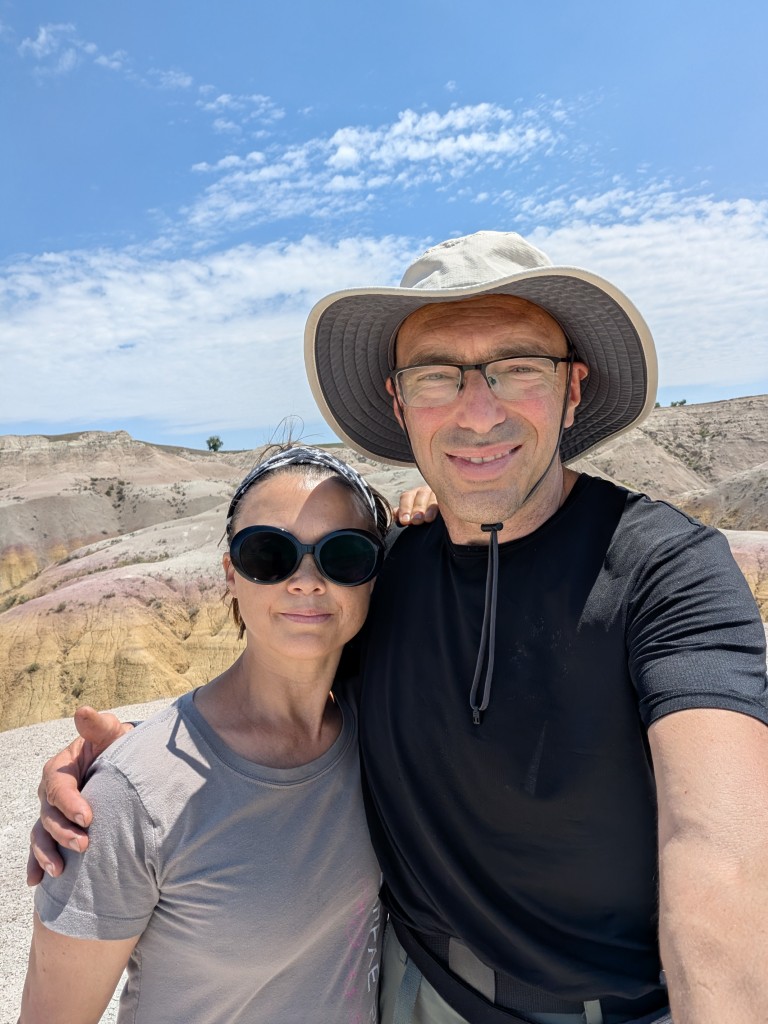July 12
Fauna
Ugh, it's so cold here in the mornings! Warm clothes, a cup of coffee, and the knowledge that in a couple of hours it will feel like summer again are enough to warm you up. Quick, grab a hot cup of coffee and get going! Fog spreads across Lake Lewis like pink cotton wool. Again, the fisherman's vague silhouette in the same spot. Maybe he's always here?
A deer with powerful antlers cautiously crosses the road. We slow down for a moment and wait. About ten minutes later, the road turns toward Yellowstone Lake.

The scenery here is magnificent, too. Now we're driving along the coast. This time, without stopping, we pass the nearest geyser field. The sun shines through the clouds of steam. It's absolutely beautiful! It feels like a special place, like a place where clouds are born.

In the slanting rays of the morning sun everything sparkles: the water, the wet rocks, the dew on the grass.
This morning, we're incredibly lucky with our encounters with wildlife. We see pelicans splashing around on the lake, and then we encounter a large herd of elk. They're large and unhurried. They're used to the close attention of people and the fact that no one will bother them here. The most important thing for everyone, human and animal, is to know their limits. The information brochures say that the distance between you and a moose should be at least the length of two buses, and if you encounter a bear, the distance should be tripled.
Let's move on - and here's another gift from nature!
A bison stands like a mighty boulder beside the road. He's enormous and imperturbable. The beast's size is impressive. A monolith! A colossus! Naturally, we stop on the side of the road and, without getting out of the car, take photos of the animal right from the open window.
River and canyon
Today, a significant portion of my time is devoted to the Yellowstone River. It can't simply be described as "wide and majestic" or "turbulent and wild." It takes on a unique character in different sections of its course.
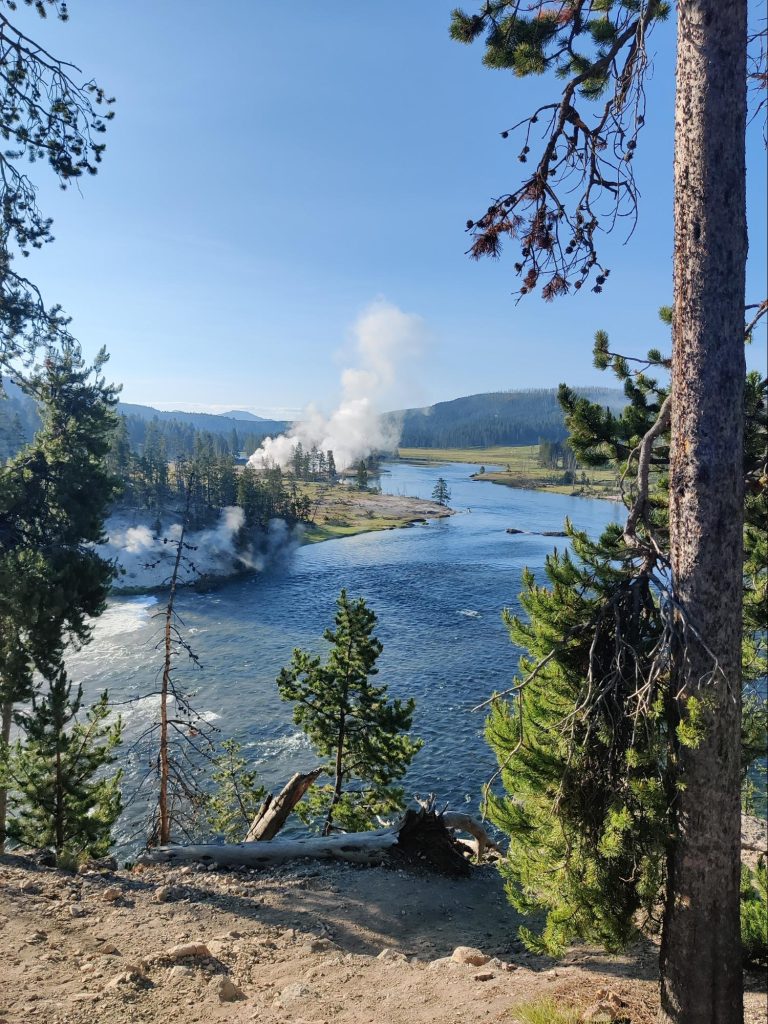
At the next stop, from the high, steep bank, you can see the steam from the hot springs rising above the wide river. Here, the water is calm and peaceful. But around the next bend, the banks narrow and the current becomes swift. And the river is unrecognizable. Just ten minutes ago, it was flowing leisurely, but suddenly, as if it had gone berserk, foaming and angry, bursting into a narrow canyon with a roar.

It's amazing how diverse the landscapes of Yellowstone National Park are! Besides geysers and hot springs, there are high mountains, high plateaus, and numerous cold, clear lakes. It even has its own Grand Canyon. That's where we arrived that morning.

Since there were no tables nearby, we had to settle down on large flat stones near the parking lot and have breakfast there.

A clear, sunny morning promises us a multitude of beautiful views. We follow the trail leading to Lenta Lake. The section that runs along the edge of the canyon is incredibly picturesque. I want to capture every outcrop of yellow rocks, every bend in the river below, in the deep gorge, every tree leaning precariously over the canyon's steep slope. There, at the bottom, the morning fog still lingers, but the slopes are already illuminated by the morning sun.
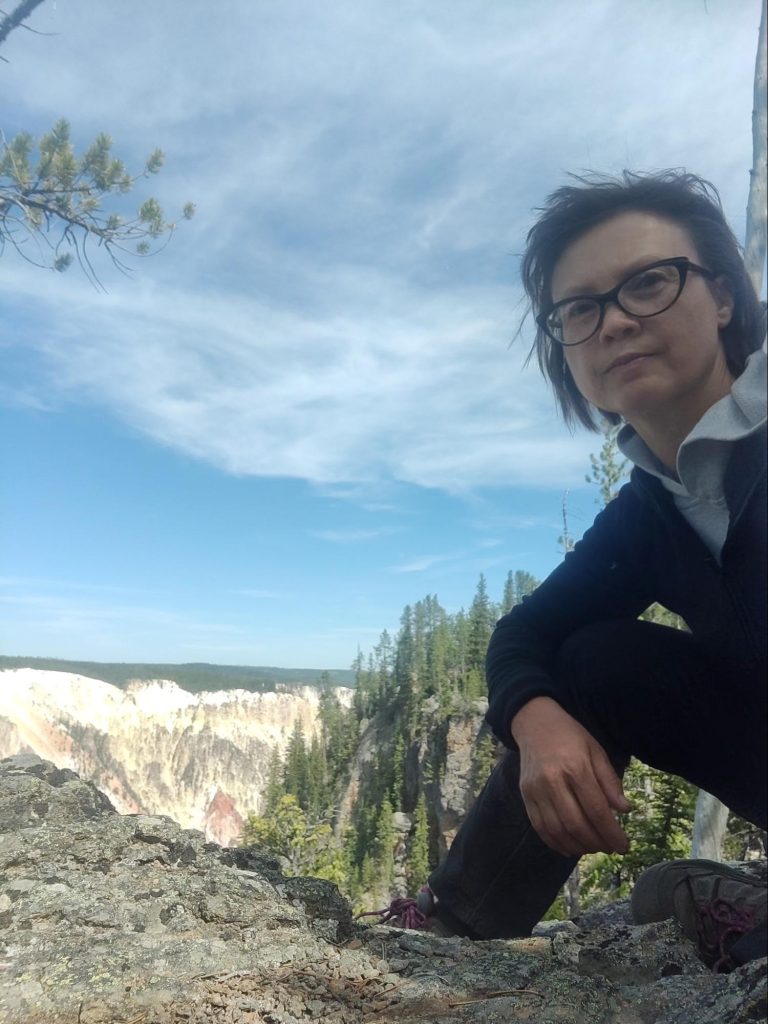
In the morning, there aren't many tourists yet, so we continue along the trail alone. The mosquitoes were just waiting for this. Starved by the solitude, they attacked us with all their might. The power of a single mosquito isn't great, but when they gather in an army, you have to fight them off in earnest. Despite everything, we conquered this trail, reaching an elongated lake overgrown with leaves. Our reward was a large porcini mushroom.
Waterfalls
By the time we get back to the parking lot, it's already quite hot. We take off our excess gear and head to the waterfalls, which are also located on the Yellowstone River.
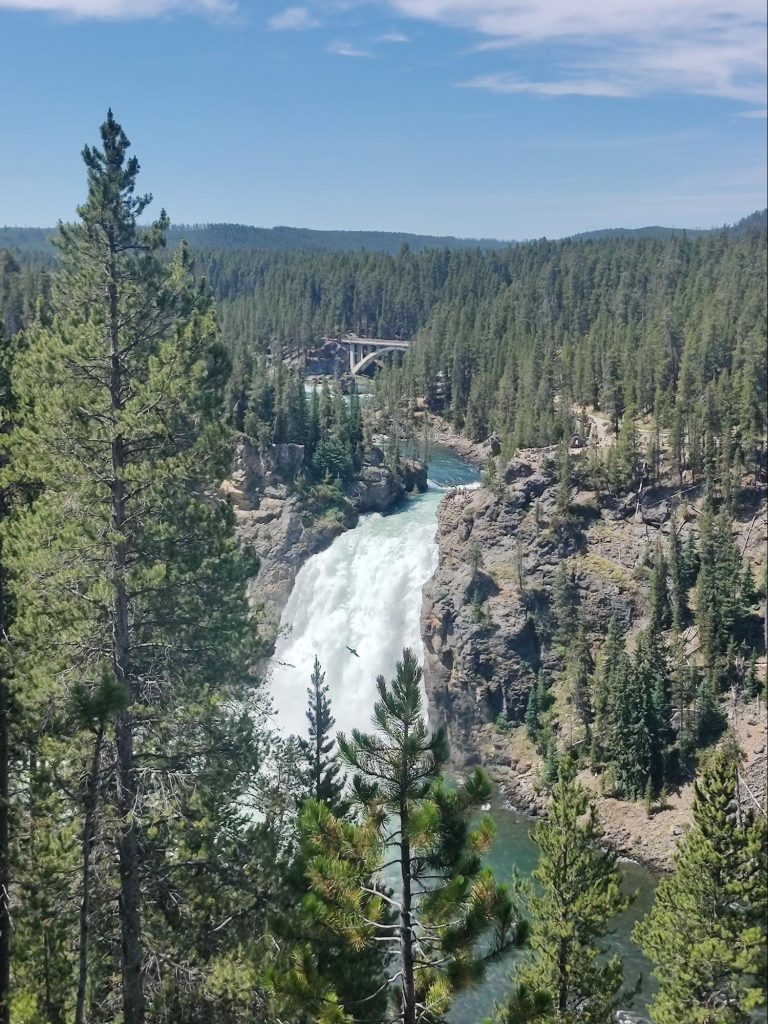
The Lower Canyon is wider and lower, the Upper Canyon is higher and more powerful, each beautiful in its own way. Numerous observation platforms allow us to see this natural wonder from different angles. In one place, a steep but well-trodden path leads almost to the very bottom of the canyon near the waterfall. In another, you can stroll along a trail further upstream, where numerous small rocky islands, each with a single tree, are scattered throughout the river's center.
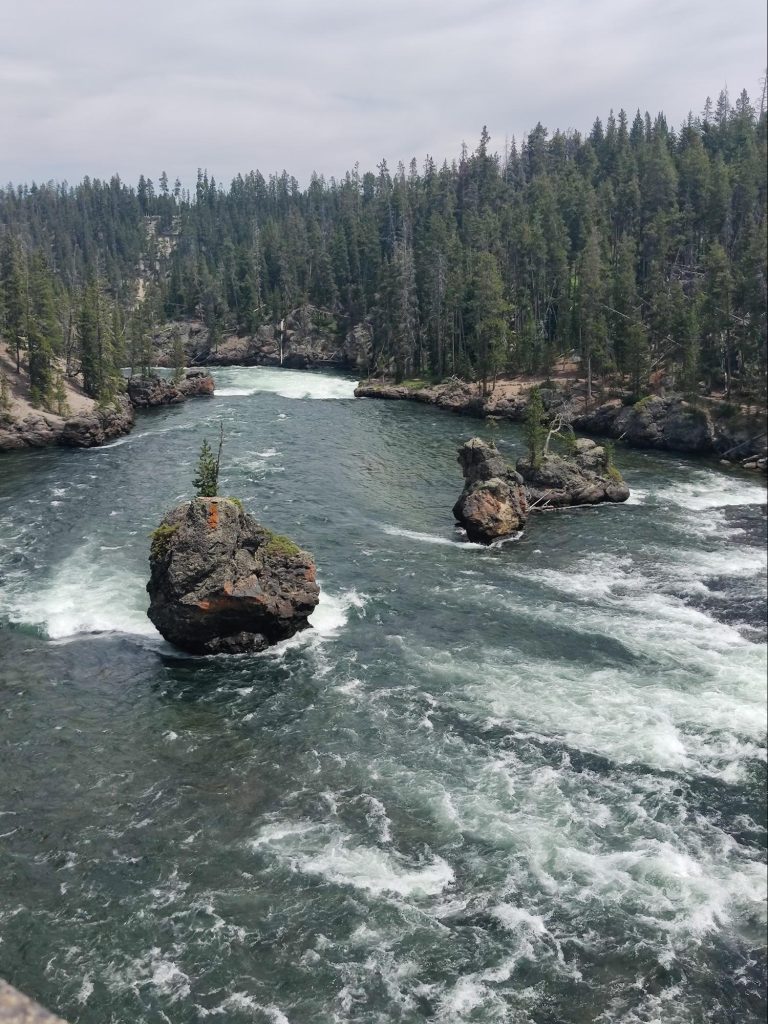
At the third and fourth observation decks you can see the waterfall from the very edge of a picturesque cliff.
Mud volcano
On the way back, we stop for lunch at Muskrat Creek. This rest area is a great place to take a short break. In the green valley, under the shade of a spreading tree, you can set up a camp stove on a table and cook some soup. We need to refresh ourselves and gain strength before heading to another interesting spot. About forty-five minutes later, we head to a spot called Mud Volcano (or Angry Volcano?) to see the murky puddles pulsating under the pressure of steam from the depths of the earth.

This, surprisingly, is also quite spectacular! At the foot of the hill, steam erupts from a crevice with a distinctive raspy sound. Water the color of liquid cement ripples and creates a small wave. This geyser is called "Dragon's Mouth.".

Nearby, slightly larger, murky lakes sigh and gurgle. Each one imagines itself a sea and produces a powerful surf. This large movement of low water is disorienting and even a little frightening. Moreover, the smell of sulfurous fumes is much stronger here than in other places, making it difficult to linger for long. But the bison lying nearby apparently doesn't care.

He's used to the smell of rotten eggs, but we aren't. The world of geysers is so diverse!
Evening
In the afternoon, passing the Fisherman Bridge, we decide to stop at a tourist village on the shore of Yellowstone Lake. There's a small museum there with taxidermied animals native to the park. We take in all the exhibits in about fifteen minutes and then head to the lakeshore. It's time to kick off our sandals, go barefoot, and soak our tired feet in the warm sand! By evening, the sand has warmed up, but the lake remains as cold as ever. Nevertheless, Denis decides he absolutely must take a swim. You can't last long in this icy water, but three minutes is enough for him to casually remark, "Yeah, I swam in Yellowstone Lake too."”
We've seen so much today! To say we're tired is an understatement. Full of impressions, we head to the campsite to rest. Looking forward to potatoes with mushrooms for dinner.
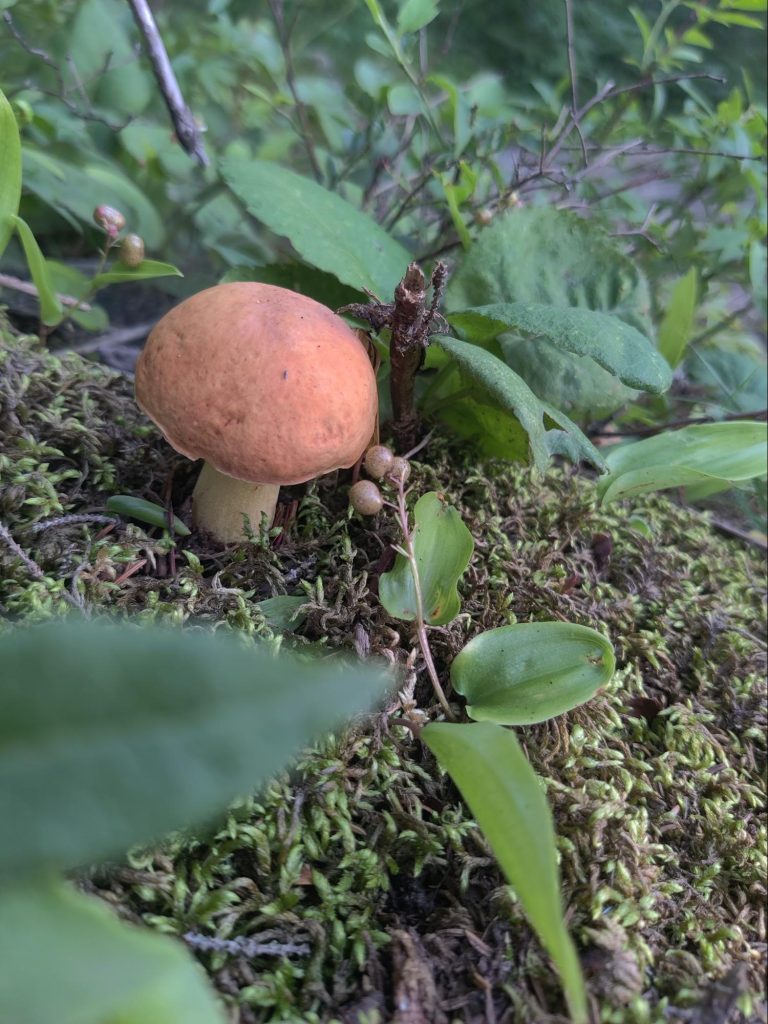
It turned out to be strong and resilient: it traveled with us all day without spoiling. When I cut it open, it was still crisp and white inside, without a single wormhole. But even half a mushroom was enough to fill my stomach. What to do with the other half? Saving it for tomorrow wouldn't make sense. Roast it? I didn't feel like doing anything else but resting. So I simply cut the mushroom into pieces and scattered them among the nearby stumps. It was our little tribute to the forest deities. I checked in the morning—almost all of it had been eaten by the local creatures. We're not the only ones who love mushrooms!
July 13
Norris Basin
In the morning, we pack up our camp. It's quick and easy. Everyone knows what they're packing. I'm responsible for the tent and everything inside it, and Denis is responsible for the camp kitchen. I'm responsible for collecting trash and keeping the campground clean, and Denis packs the bulky items into the car: the cooler, camp chairs, and the backpack with the tent, mats, and sleeping bags.
On the way to the next valley of geysers we stop by a waterfall (Gibbon falls).

Because it's only seven in the morning, it's completely hidden in shadow. Unfortunately, there's no time to wait for better light; we take a few photos and move on.
Early in the morning we arrive at Norris Basin, another large area with geysers.

It's divided into two unequal halves. First, we head to Porcelain Meadow. Like other similar places, there are wooden paths here. This meadow differs from the others in that the geysers and hot springs have a cloudy, milky-white hue.

The opal-colored water contrasts stunningly with the green streams that spread widely across the whitish, brown-streaked, and occasionally yellow and orange, earth. A veritable feast of color and beauty!
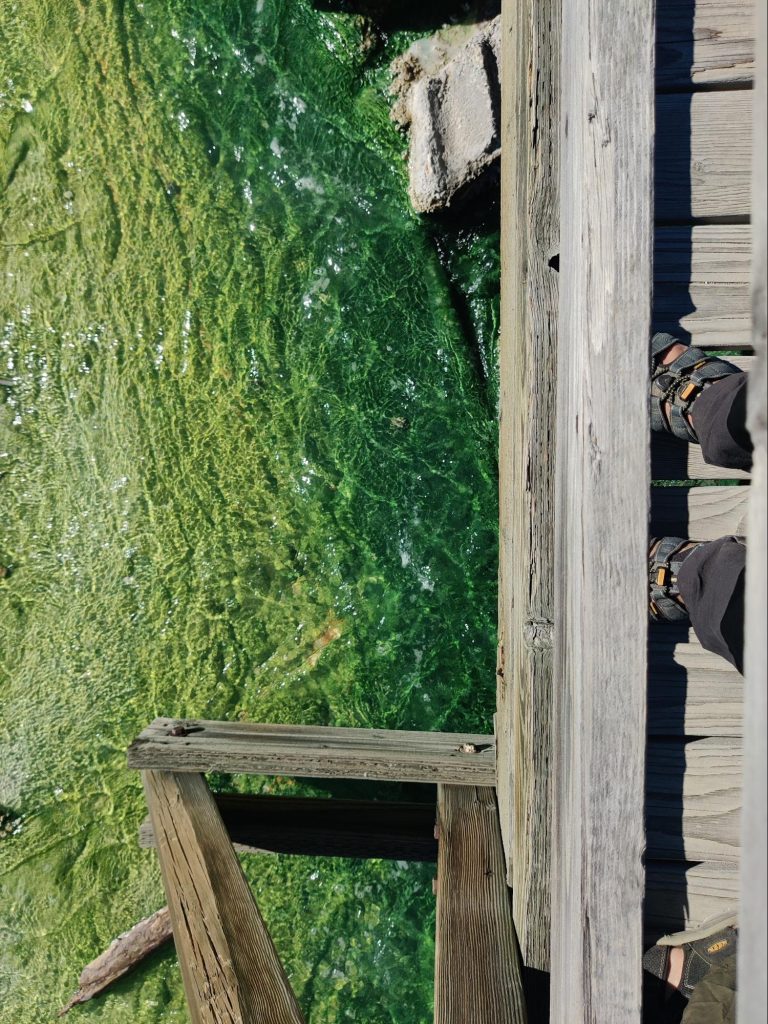
And above all this colorful joy, numerous geysers steam. It's noticeably warmer here, and the air is so saturated with moisture that you need to remember to wipe your camera lens. Otherwise, everything turns out hazy, like fog.
As we walk to the other side of the clearing along the Black Trail, we notice that the spacious parking lot is already completely occupied. Cars are parked even where there are warning signs warning that rocks from the erupting geyser may reach these areas.

Yes! They do exist! Park staff can likely monitor their activity and close dangerous areas promptly, otherwise there wouldn't be such an influx of tourists. They say that in the past, people sealed one such violent geyser with stones. Modern scientists consider this an act of violence against nature. Since then, the geyser has ceased to pose a danger. But who knows, maybe one day the "champagne bottle" effect might occur, where the cork can burst with redoubled force under the pressure of the gases.

As we pull out of the parking lot, our spot is immediately taken by others eager for a spectacle. It's a good thing we arrived here early in the morning.
Upper and lower terraces
The last point we wanted to visit in Yellowstone National Park was the Upper and Lower Terraces.
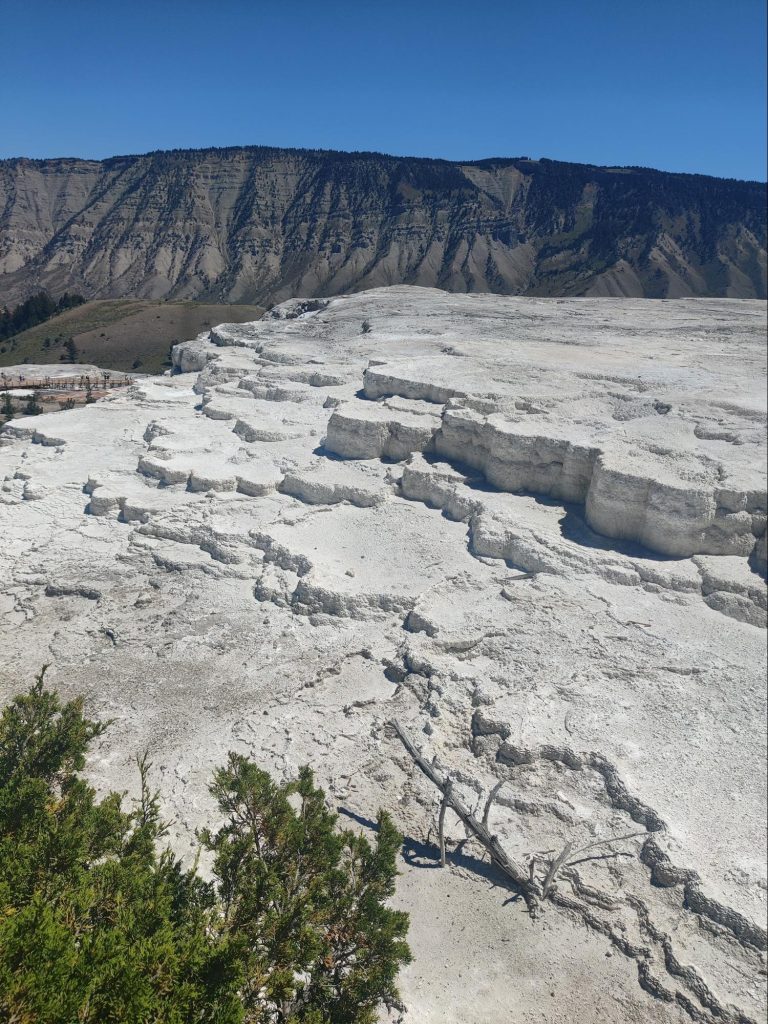
They are stepped formations of white and yellowish-brown flowers. This is another interesting example of the park's diverse landscapes. July 13th was probably the hottest day. Moreover, we had to climb up and down numerous steps connecting the different levels of the terraces.
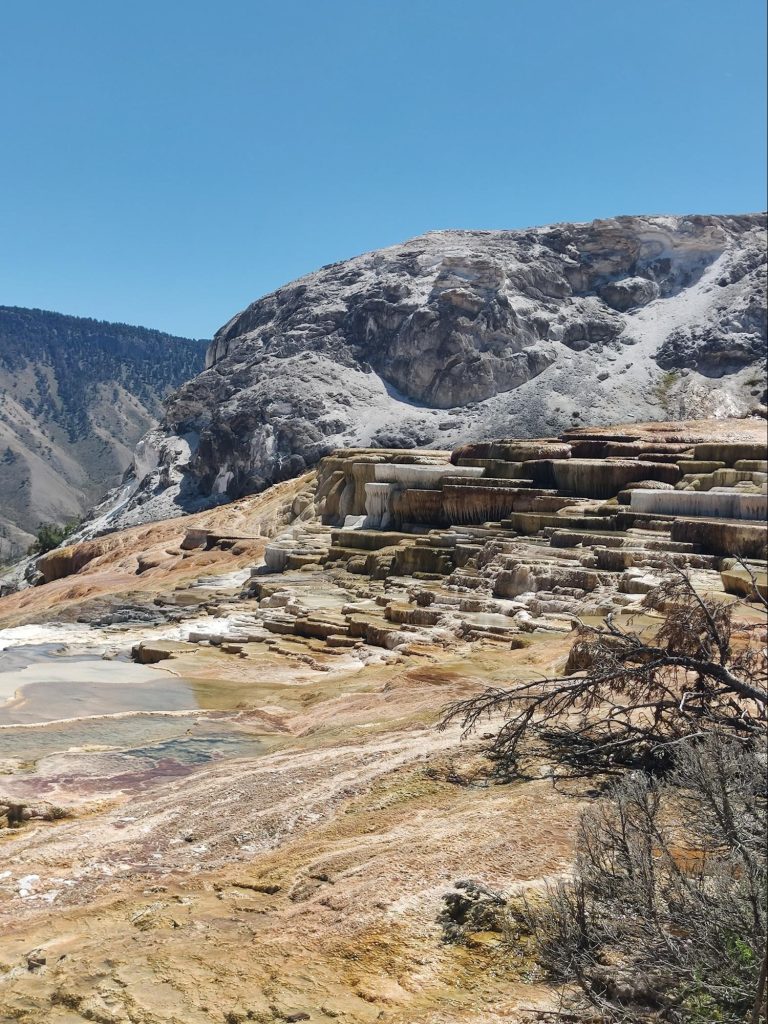
My strength began to rapidly evaporate along with the sweat. To top it all off, there was no shade anywhere. And that was just the tip of the iceberg. When we descended the mountains, it became clear it was much hotter below; the thermometer on the bank building showed 37 degrees Celsius.

A good way to combat overheating is to drink a bottle of water and eat some ice cream. That's what we did a little later.
Yellowstone Park left a lasting impression on us. We'd traveled and seen so much before, it's hard to surprise us anymore. But geysers, a unique natural phenomenon, were our first experience. And like children, we wandered around and marveled at everything. We took an incredible number of photos, which I'm sure we'll look at again and again.

Go to main page of the trip.












